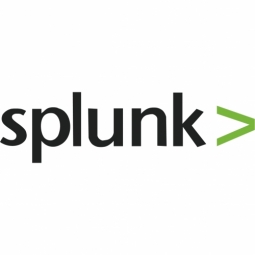
Technology Category
- Analytics & Modeling - Machine Learning
- Analytics & Modeling - Predictive Analytics
Applicable Industries
- Electrical Grids
- Equipment & Machinery
Applicable Functions
- Maintenance
- Product Research & Development
Use Cases
- Onsite Human Safety Management
- Time Sensitive Networking
Services
- Data Science Services
- Testing & Certification
The Customer
Honda Alabama
About The Customer
Honda Manufacturing of Alabama (HMA) is Honda's largest light truck production facility in the world. It is the sole producer of Honda's Passport SUV, Odyssey minivan, Pilot SUV, Ridgeline truck, and the V-6 engines that power them. The factory employs over 4,500 employees who work with a complex fleet of machinery to assemble cars from hood to hubcap. This includes building frames, painting car bodies, and intricately placing thousands of parts within each vehicle. The facility is known for its meticulous production process, which generates a significant amount of data.
The Challenge
Honda Manufacturing of Alabama (HMA), the largest light truck production facility of Honda, was facing a significant challenge in terms of data utilization. Despite generating a vast amount of data from the assembly floor, the plant lacked the ability to leverage this data for insights into parts, equipment, and machines. This lack of visibility forced the team to adopt a reactive approach to troubleshooting, which was inefficient and often led to machine failure or interruptions in the production line. The inability to predict and proactively address issues was hindering the plant's efficiency, safety, and profitability.
The Solution
To overcome these challenges, Honda of Alabama turned to Splunk, a software platform that uses machine learning, IoT, and predictive analytics to turn data into actionable insights. Splunk was integrated across the factory, enabling Honda to proactively identify and solve problems before they escalated. The software's predictive capabilities transformed the plant's approach to problem-solving and innovation. For instance, Splunk's machine learning technology was used to predict and monitor equipment temperature when burning paint fumes, ensuring compliance with environmental standards and preventing shutdowns. Furthermore, visualized metrics and contextual event insights facilitated more collaborative problem-solving, significantly reducing the mean time to repair (MTTR).
Operational Impact
Quantitative Benefit

Case Study missing?
Start adding your own!
Register with your work email and create a new case study profile for your business.
Related Case Studies.

Case Study
Smart Water Filtration Systems
Before working with Ayla Networks, Ozner was already using cloud connectivity to identify and solve water-filtration system malfunctions as well as to monitor filter cartridges for replacements.But, in June 2015, Ozner executives talked with Ayla about how the company might further improve its water systems with IoT technology. They liked what they heard from Ayla, but the executives needed to be sure that Ayla’s Agile IoT Platform provided the security and reliability Ozner required.

Case Study
IoT enabled Fleet Management with MindSphere
In view of growing competition, Gämmerler had a strong need to remain competitive via process optimization, reliability and gentle handling of printed products, even at highest press speeds. In addition, a digitalization initiative also included developing a key differentiation via data-driven services offers.

Case Study
Predictive Maintenance for Industrial Chillers
For global leaders in the industrial chiller manufacturing, reliability of the entire production process is of the utmost importance. Chillers are refrigeration systems that produce ice water to provide cooling for a process or industrial application. One of those leaders sought a way to respond to asset performance issues, even before they occur. The intelligence to guarantee maximum reliability of cooling devices is embedded (pre-alarming). A pre-alarming phase means that the cooling device still works, but symptoms may appear, telling manufacturers that a failure is likely to occur in the near future. Chillers who are not internet connected at that moment, provide little insight in this pre-alarming phase.

Case Study
Premium Appliance Producer Innovates with Internet of Everything
Sub-Zero faced the largest product launch in the company’s history:It wanted to launch 60 new products as scheduled while simultaneously opening a new “greenfield” production facility, yet still adhering to stringent quality requirements and manage issues from new supply-chain partners. A the same time, it wanted to increase staff productivity time and collaboration while reducing travel and costs.

Case Study
Integration of PLC with IoT for Bosch Rexroth
The application arises from the need to monitor and anticipate the problems of one or more machines managed by a PLC. These problems, often resulting from the accumulation over time of small discrepancies, require, when they occur, ex post technical operations maintenance.

Case Study
Data Gathering Solution for Joy Global
Joy Global's existing business processes required customers to work through an unstable legacy system to collect mass volumes of data. With inadequate processes and tools, field level analytics were not sufficient to properly inform business decisions.







